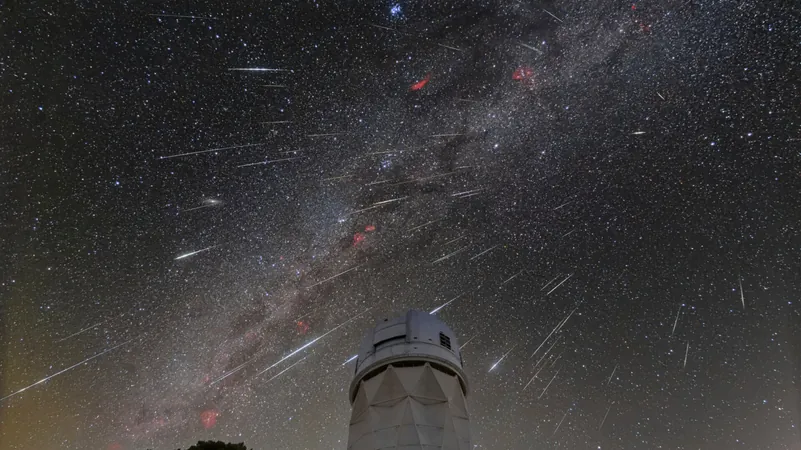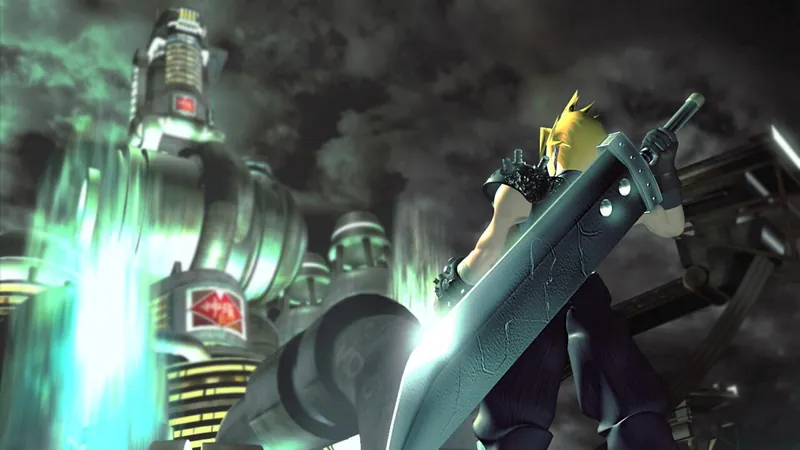
NASA Unveils Hidden Secrets of Abandoned US Army Base Beneath Greenland's Ice: A Cold War Mystery Resurfaces
2024-11-25
Author: Jacques
Unearthing Camp Century
Deep beneath the vast ice sheet of Greenland lies a significant relic from the Cold War era—a US Army base long lost under layers of ice. Thanks to a NASA flyover conducted earlier this year, researchers have gained an extraordinary glimpse into Camp Century, a top-secret facility that hasn't been seen since its abandonment over five decades ago.
The Construction and Purpose of Camp Century
Constructed in 1959 by the US Army Corps of Engineers, Camp Century was ingeniously integrated into the ice cap, resembling the fictional Echo Base from Star Wars: The Empire Strikes Back. Central to its operations was the PM-2A portable nuclear reactor, which powered this unique "city beneath the ice." The base was designed to accommodate around 200 soldiers and boasted a range of amenities, including a theater, a gym, a post exchange, a library, and even a chapel.
Although Camp Century was officially presented as a scientific outpost contributing to climate research through ice core drilling, its true purpose was far more militaristic. It served as part of Project Iceworm, a strategy to station hundreds of cold-hardened Minuteman nuclear missiles in the remote Greenlandic tundra, capable of striking the Soviet Union if required. Ultimately, however, this ambitious plan was deemed impractical, leading to the abandonment of the facility in 1967. Following its closure, Camp Century was entombed by a relentless accumulation of ice and snow, with its remnants now believed to lie at depths of over 30 meters (approximately 100 feet) beneath the surface.
NASA's Discoveries through UAVSAR Technology
For decades, scientists could examine the camp only through ground-penetrating radar, which provided a limited two-dimensional view of what lay buried beneath. However, April 2023 marked a turning point when NASA's Earth Observatory, during an ice sheet survey using advanced Uninhabited Aerial Vehicle Synthetic Aperture Radar (UAVSAR), unexpectedly detected what appeared to be the remnants of Camp Century.
"The goal was to map the ice sheet's internal layers and its base," said Alex Gardner, a NASA JPL cryospheric scientist and project co-lead. "We were initially uncertain about what we had discovered." The serendipitous find revealed previously unseen infrastructure of Camp Century, offering a unique opportunity to analyze the condition of this Cold War relic after nearly 60 years frozen in time.
Implications of Environmental Risks
Despite the groundbreaking insights provided by the UAVSAR technology, the images captured contain imperfections. Some misinterpretations suggest Camp Century sits below the actual ice bed rather than at a substantial depth beneath it due to the angled nature of radar signals. NASA explained that this caused confusion regarding the relative position of the facility under the thick ice sheet.
The importance of Camp Century extends far beyond mere historical curiosity. The facility's legacy carries significant implications for environmental science today. It serves as a critical site for assessing nuclear, biological, and chemical waste that was inadequately managed during its operational years— a concern given the accelerating climate crisis. NASA researchers previously indicated that, if climate change continues on its current trajectory, toxic waste stored beneath the ice could begin leaching into the surrounding ecosystem well before surface melting becomes evident.
Hazardous Materials and Projections
Among the hazardous materials believed to be buried there, NASA estimates contain approximately 53,000 gallons of diesel fuel and over 6.3 million gallons of wastewater, including sewage from the camp's operation. Additionally, the Atomic Heritage Foundation estimates that the PM-2A reactor might have generated over 47,000 gallons of low-level radioactive waste. The exact quantity and location of these substances remain elusive, but previous radar imaging confirms their presence in the vicinity.
As climate change threatens the stability of Greenland’s ice sheet, experts caution that these environmental risks could worsen. Projections suggest that by 2090, changes in climate could destabilize the ice above Camp Century, posing a danger of contamination leaching out of the buried waste.
Collaborative Monitoring Efforts
Interestingly, Camp Century’s closure in 1967 stemmed from the realization that the ice sheet's instability would not support the extensive tunnel system originally envisioned under Project Iceworm. Today, a collaborative monitoring project led by Greenland and Denmark aims to keep an eye on the site, which lies roughly 150 miles from the United States Space Force’s Pituffik Space Base, formerly known as Thule Air Base, the location from which Camp Century was supervised.
Conclusion and Future Implications
As our world faces unprecedented challenges from climate change and its impacts on sea-level rise, the fate of Camp Century could provide invaluable information. Understanding the risks it poses and how ice sheets respond to a warming climate is imperative for accurate predictions of future environmental conditions.









 Brasil (PT)
Brasil (PT)
 Canada (EN)
Canada (EN)
 Chile (ES)
Chile (ES)
 España (ES)
España (ES)
 France (FR)
France (FR)
 Hong Kong (EN)
Hong Kong (EN)
 Italia (IT)
Italia (IT)
 日本 (JA)
日本 (JA)
 Magyarország (HU)
Magyarország (HU)
 Norge (NO)
Norge (NO)
 Polska (PL)
Polska (PL)
 Schweiz (DE)
Schweiz (DE)
 Singapore (EN)
Singapore (EN)
 Sverige (SV)
Sverige (SV)
 Suomi (FI)
Suomi (FI)
 Türkiye (TR)
Türkiye (TR)